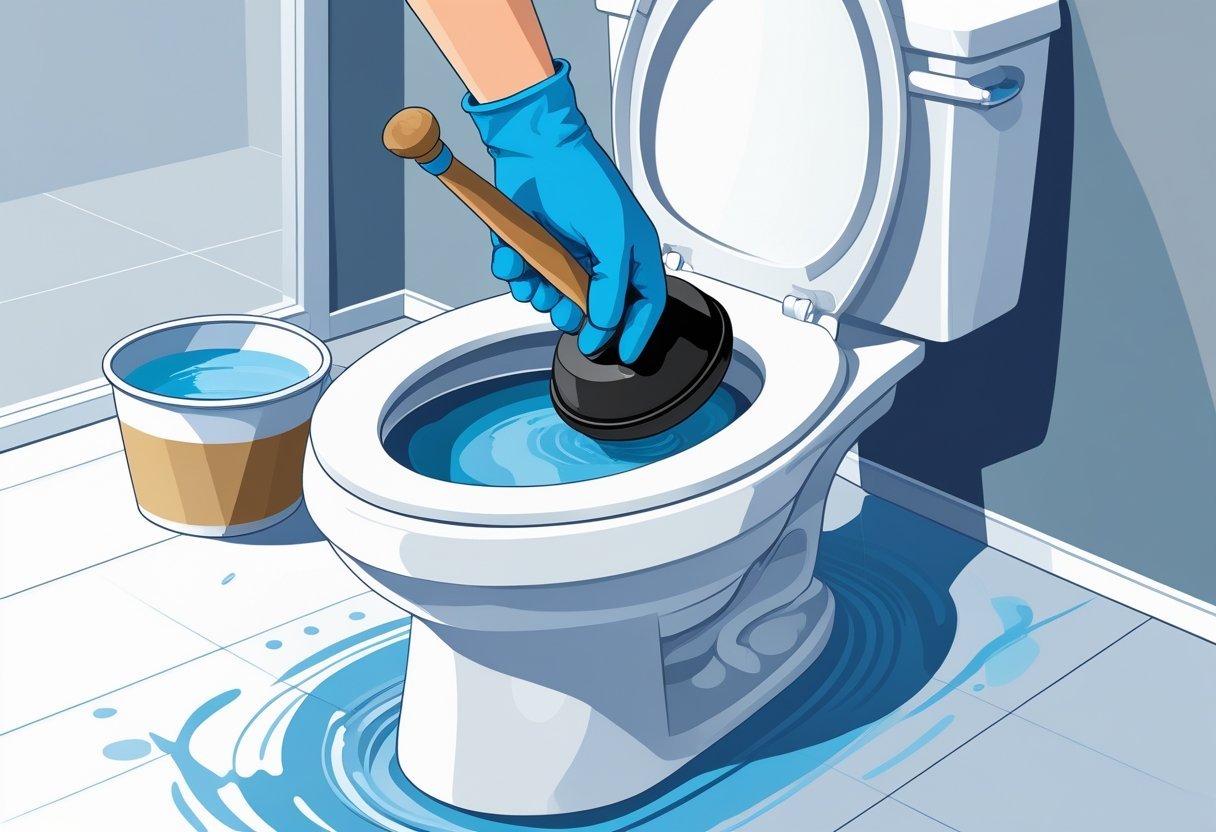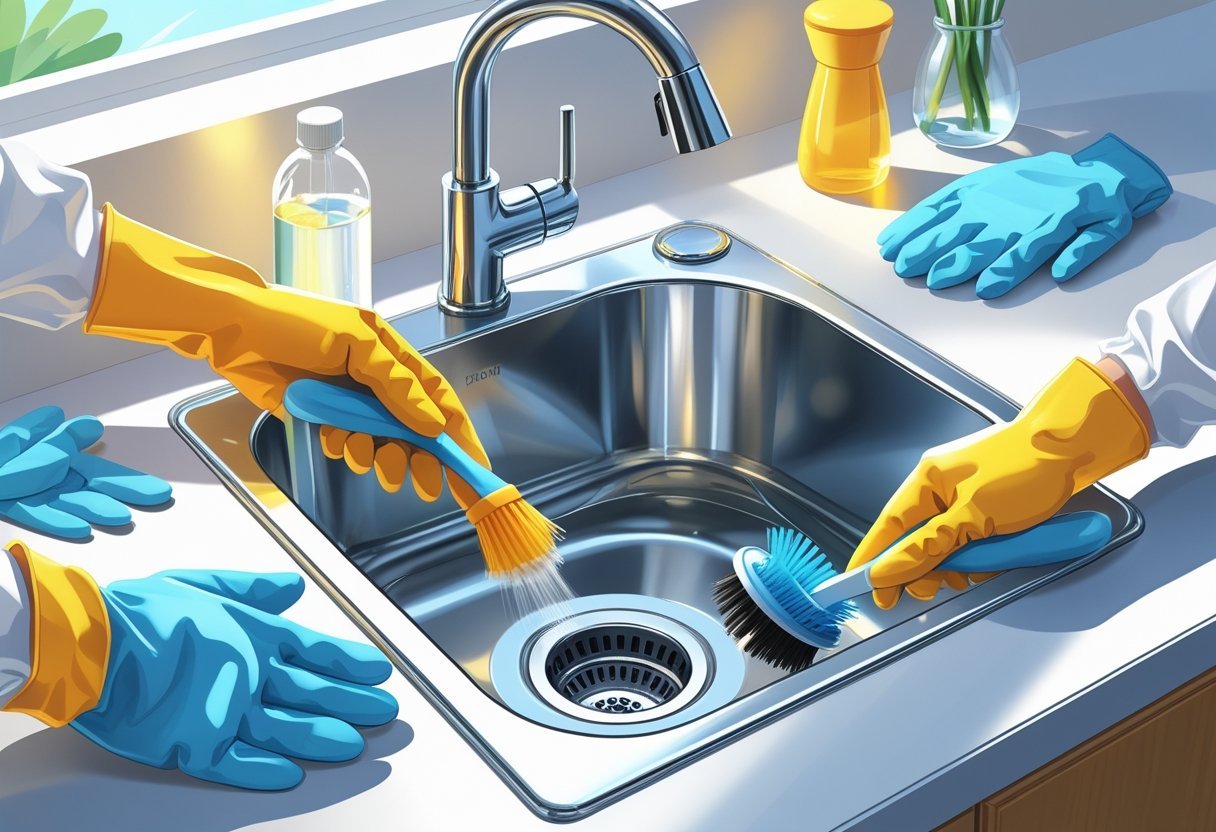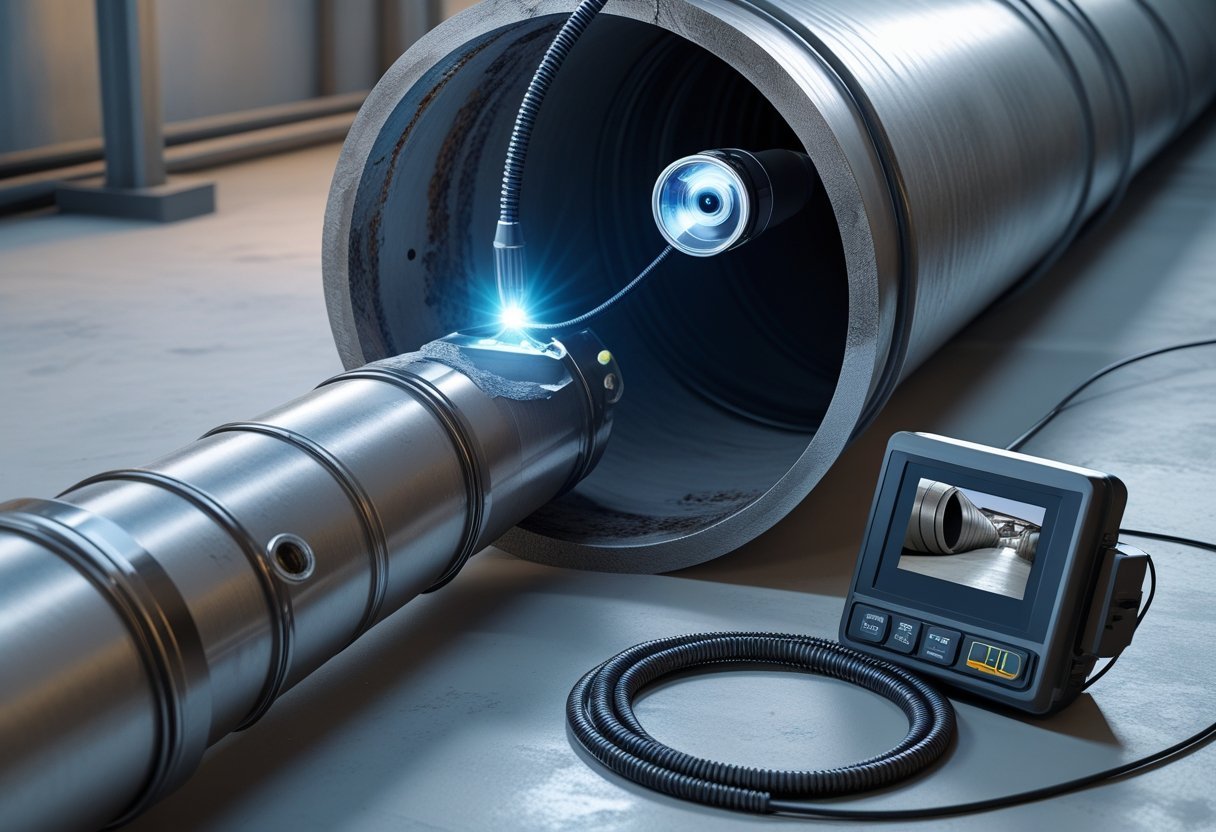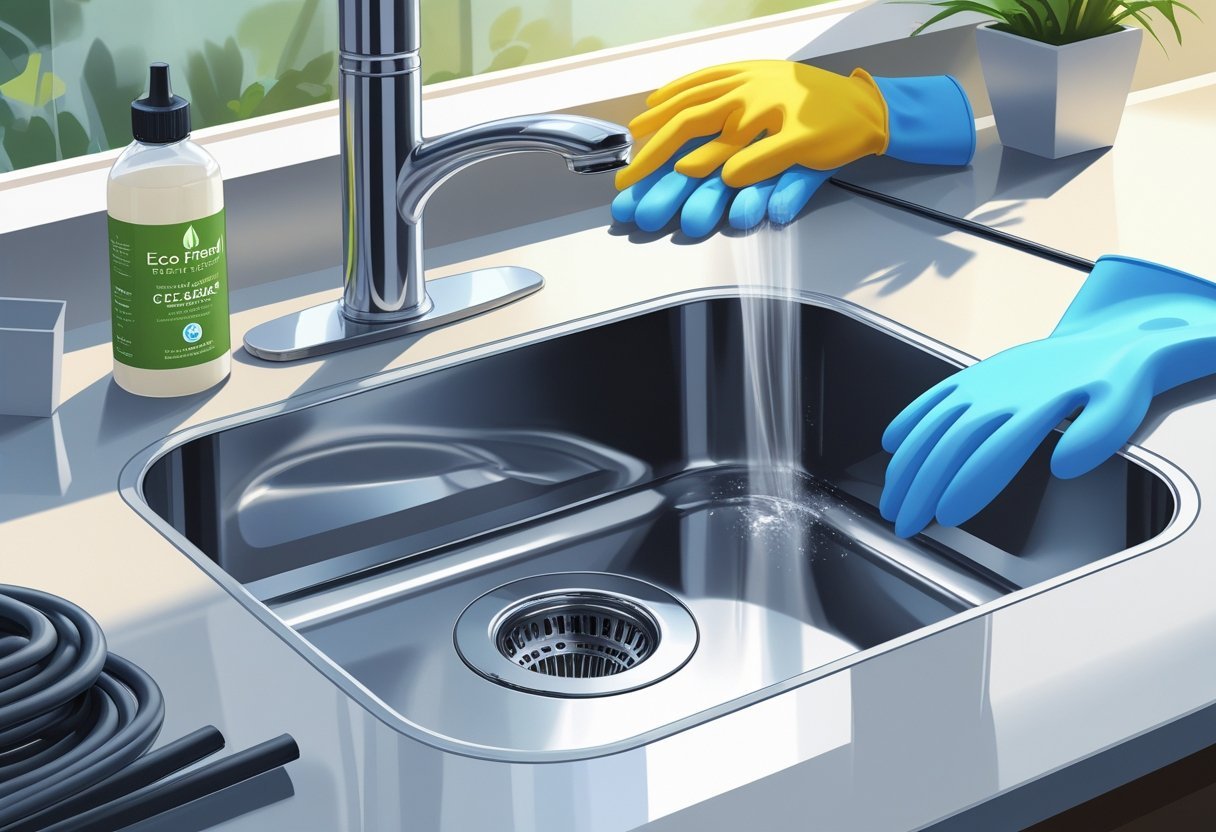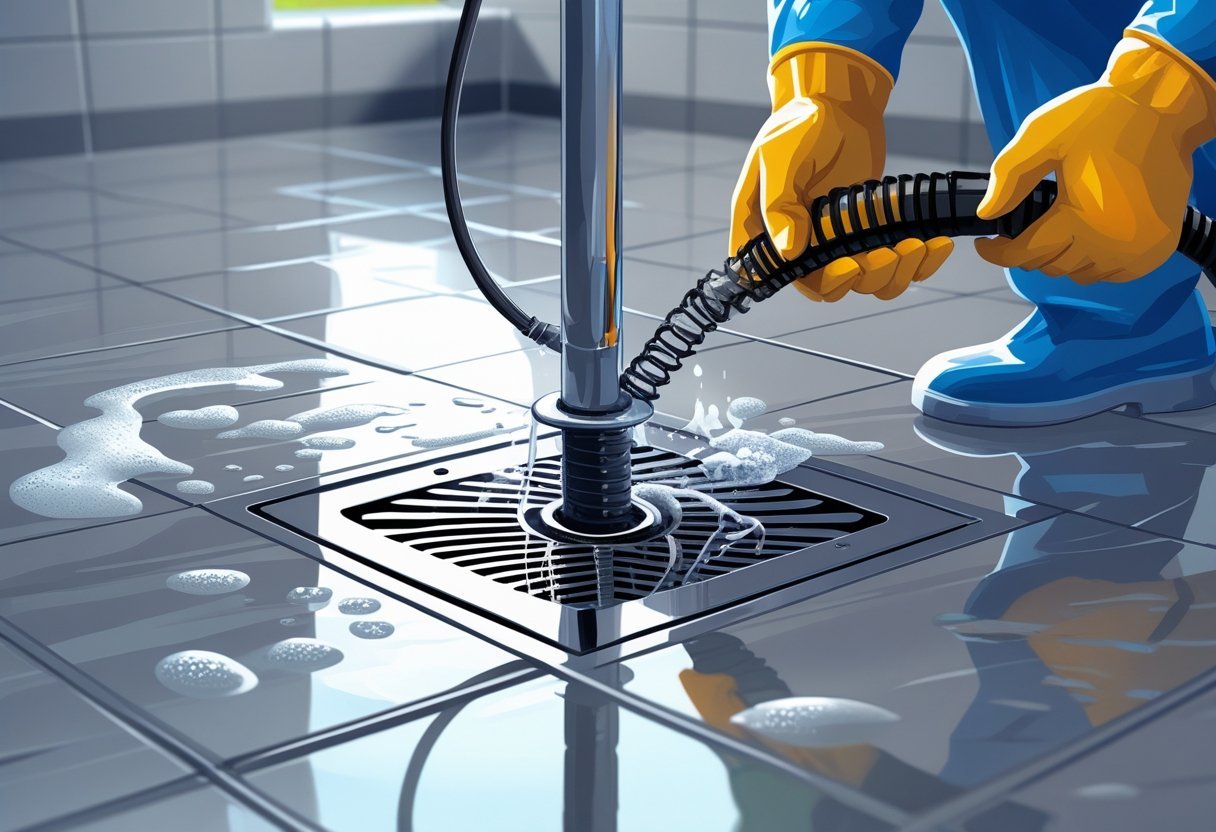Cleaning your toilet bowl can be a daunting task, especially if you’re not sure how to properly drain it. To effectively drain the toilet bowl for cleaning, you can use a few simple methods that will help you avoid mess while ensuring a thorough job. Knowing these steps not only saves you time but also keeps your bathroom hygienic and fresh.
For a hassle-free cleaning experience, you might want to consider using a toilet plunger or shutting off the water supply and flushing the toilet. This way, the water level reduces significantly, making it easier for you to scrub away stains and disinfect the bowl. With the right approach, you can accomplish this task efficiently.
If you’re unsure about the process or need additional assistance, Large View Plumbing & Heating is here to support you. Their experienced team can provide guidance and help ensure your plumbing projects are completed to the highest standards. With expert advice at your fingertips, you’ll feel more confident tackling any cleaning or maintenance tasks in your home.
Preparing to Drain a Toilet Bowl
Before you begin the process of draining a toilet bowl, it’s essential to prepare adequately. Proper preparation involves gathering the right tools, ensuring safety, and turning off the water supply. Taking these steps will lead to a smoother cleaning experience.
Gather Necessary Tools and Materials
To effectively drain a toilet bowl, gather the following tools and materials:
- Bucket: Essential for catching any residual water.
- Rubber Gloves: Protects your hands from bacteria and ensures hygiene.
- Plunger: If you’re dealing with a clog, this can help remove excess water or waste.
- Towel: For any spills or drips that may occur.
Having everything on hand before you start will make the process more efficient. Keep your bucket close to the toilet to catch any water quickly. Ensure your gloves are clean and intact to maintain cleanliness during the task.
Ensure Safety and Hygiene
Safety and hygiene are crucial when draining water from a toilet bowl. Start by putting on rubber gloves to protect your hands from contaminants. Toilets can harbor bacteria, so it’s vital to minimize your exposure.
Consider using a mask if you’re sensitive to odors. Ensure your workspace is clean and clear of unnecessary items to prevent accidents. Once you’ve prepared your area, maintain a sanitary environment throughout the process. This will not only keep you healthy but also ensure a more pleasant cleaning experience.
Turn Off the Water Supply
To begin draining the toilet, locate the water supply valve. This is typically found behind the toilet, at the base of the tank. For safety, turn the valve clockwise until it completely shuts off.
After shutting off the water supply, flush the toilet to remove as much water as possible from the bowl. You may need to plunge the toilet a few times to clear any remaining water effectively. Familiarize yourself with your specific shut-off valve mechanism to avoid any potential leaks, which could lead to additional issues during cleaning. If you have any uncertainties, consult a professional from Large View Plumbing & Heating for guidance tailored to your situation.
Steps to Drain Water from the Toilet Bowl
Draining water from the toilet bowl is essential for thorough cleaning or maintenance. This section covers specific methods you can use to remove water effectively, ensuring you use the right tools and techniques.
Flush the Toilet to Remove Most Water
Start by flushing the toilet to initiate the draining process. When you flush, the flush valve opens, allowing water from the tank to rush into the bowl. This action helps remove most of the water quickly.
After the flush, you may still find some residual water left in the bowl. If necessary, you can continue flushing until the majority of water has been removed. This method is quick and requires no additional tools, making it ideal for initial cleaning tasks.
Remove Excess Water with a Sponge or Towel
Once you’ve flushed the toilet, some water will likely remain. To remove this excess water, use an absorbent sponge or a towel. Carefully place the sponge into the bowl to soak up as much water as possible.
Wring the sponge out in a bucket to avoid spills. If using a towel, fold it into a manageable size, then use it to blot up the remaining water. This ensures that you can clean or perform maintenance without excess water getting in the way.
Use a Plunger or Wet/Dry Vacuum
If you still have standing water, a toilet plunger can be another effective tool. Place the flange of the toilet plunger firmly into the drain hole and give it several up-and-down thrusts. This will help push the remaining water down the drain.
Alternatively, using a wet/dry vacuum is a more efficient option. Simply use the vacuum’s hose to suction up the water directly from the bowl. Ensure the vacuum is set to liquid mode before you begin. This method allows you to quickly remove all water without any mess.
Alternative Methods for Draining the Bowl
If conventional methods aren’t sufficient, you can use a turkey baster to remove water manually. Insert the turkey baster into the bowl and squeeze to draw water in, then release it into a bucket.
Another alternative is to pour a small amount of water directly into the bowl; this can create enough flow to help drain what’s left. If you wish, a chemical drain cleaner can also be an option, but be cautious as these can be harsh. It’s wise to consult with a professional, like Large View Plumbing & Heating, for specific recommendations suited to your toilet.
Cleaning the Toilet Bowl After Draining
Once you have successfully drained the toilet bowl, the next step is to ensure a thorough cleaning. This involves applying an effective cleaning solution, targeting any deep stains or deposits, and then rinsing the bowl before restoring the water supply. Here’s how to do it effectively.
Apply Cleaning Solution and Scrub
Begin by selecting a suitable toilet cleaning solution. Many products are designed specifically for toilet bowls, containing ingredients that break down stains and disinfect surfaces. Pour the cleaning solution around the inside rim of the bowl.
Make sure to coat the entire surface, allowing it to sit for several minutes.
Using a sponge or a toilet brush, scrub the bowl thoroughly. Focus on areas where buildup is often found, such as under the rim and at the base of the bowl.
Tip: For extra cleaning power, consider using a mixture of baking soda and vinegar as a natural alternative.
Target Deep Stains and Deposits
For persistent stains or mineral deposits, you may need to employ more intensive cleaning methods. Use a pumice stone or a specialized toilet bowl cleaner designed for tough stains.
Apply the cleaner according to the manufacturer’s instructions, typically allowing it to sit for a few minutes before scrubbing.
Be sure to scrub in circular motions to ensure all areas are addressed. For stains below the waterline, you might have to use a flexible hose to adjust the water level temporarily, making stains more accessible.
Removing these deep stains will significantly enhance the cleanliness of your toilet.
Rinse and Restore Water Supply
Once you’ve thoroughly scrubbed the bowl, it’s time to rinse. If possible, use a bucket of water to flush the cleaning solution down the bowl effectively. Pour the water swiftly to create a natural flushing motion.
If you’ve used a flexible hose, restore the water supply by turning the valve back on.
Finally, flush the toilet normally to ensure all cleaning residue is washed away. This step not only rinses away the cleaning solution but also helps to prevent any lingering odors.
If any areas still appear dirty after the rinsing process, repeat the cleaning steps as necessary.
For all plumbing needs, consider reaching out to professionals like Large View Plumbing & Heating, who guarantee quality service in North Shore, Massachusetts.
Draining the Toilet Tank When Necessary
Draining the toilet tank may be essential for maintenance or cleaning purposes. Knowing when and how to perform this task properly can help maintain your toilet’s functionality over time and prevent issues such as leaks or sediment buildup.
When to Drain the Tank
You should consider draining the toilet tank in various situations. If you’re planning to clean inside the tank, draining it first allows for a more thorough job. Accumulated minerals and debris can affect the flush mechanism and may cause clogs.
Additionally, if you’re experiencing persistent leaks, emptying the tank can help you identify the source. If you’re replacing parts like the flapper or fill valve, a complete drain is necessary to work effectively. For significant plumbing tasks, calling professionals like Large View Plumbing & Heating ensures everything is handled correctly.
Step-by-Step Tank Draining
Follow these steps to effectively drain your toilet tank:
- Turn off the Water Supply: Locate the shut-off valve behind your toilet and turn it clockwise to stop water flow.
- Remove the Tank Lid: Carefully lift the lid off the tank and set it aside in a safe spot to avoid breakage.
- Flush the Toilet: Press down on the flush lever to empty the tank. Hold it down until no more water flows into the bowl.
- Sponge Out Remaining Water: After the tank clears, use a sponge to soak up any water left behind. This step helps avoid messes when you’re working inside.
- Inspect and Clean: With the tank empty, you can now inspect components like the fill valve and flapper. Clean any stains or buildup before reassembling.
Performing these steps will ensure you have access to the components you need to clean or repair effectively. If you’re unsure or faced with complicated issues, a skilled team, such as Large View Plumbing & Heating, can assist without hassle.
Post-Draining Considerations and Troubleshooting
After successfully draining your toilet bowl, it’s important to check for any potential issues before proceeding with cleaning or repairs. This includes inspections for leaks and water damage, addressing any plumbing problems, and making preparations for maintenance.
Check for Leaks and Water Damage
Inspect the area around the base of the toilet for any signs of leaks. Look for pooling water or damp spots on the floor, which may indicate a faulty wax seal or loose flange.
Steps to Check for Leaks:
- Visual Inspection: Examine the floor around the toilet for any moisture.
- Feel for Dampness: Run your hand around the base to detect any wet areas.
- Check the Tank and Bowl: Ensure there are no drips from the tank or bowl connections.
If you notice any leaks, consider contacting a professional service like Large View Plumbing & Heating to assess the situation.
Addressing Plumbing Issues
If your toilet is draining slowly or not holding water, there may be plumbing issues that need attention. These can stem from blockages in the drain line or issues within the toilet itself.
Common Plumbing Issues:
- Clogs: Hair, debris, or mineral buildup can inhibit proper drainage. Use a plunger or auger to address minor clogs.
- Faulty Flapper: A damaged flapper can cause water to leak continuously. This can be replaced easily.
- Water Supply Problems: Ensure the shut-off valve is fully operational and that there are no issues with the supply lines.
If plumbing issues persist, reach out to experts like Large View Plumbing & Heating for a thorough diagnosis.
Preparing for Toilet Repairs or Maintenance
Before beginning any repairs, ensure the area is clean and accessible. Gather necessary tools, such as a bucket, towel, and the needed replacement parts, to streamline the process.
Checklist for Repairs:
- Tools: Have a plunger, wrench, screwdrivers, and replacement parts ready.
- Safety Measures: Ensure the water supply is off and that you have towels to catch any residual water.
- Follow Manufacturer Instructions: Refer to installation guides for proper part replacement.
Taking these preparation steps will ensure your maintenance tasks go smoothly and efficiently, ultimately extending the life of your toilet.
Frequently Asked Questions
Draining a toilet bowl for cleaning involves several techniques and considerations. Here are responses to common inquiries that can help you with the process.
What is the best method to empty a toilet bowl for cleaning purposes?
One effective method is to shut off the water supply and flush the toilet. This empties the bowl and allows for easier access. Alternatively, you can fill a bucket with water and pour it into the bowl quickly to force a drain.
Can you drain a toilet bowl if it’s clogged without using a plunger?
Yes, you can drain a clogged toilet bowl without a plunger. Using a hose can create suction to remove water. Insert one end into the bowl, keeping the other end lower, and create a seal to draw water out.
What steps should I follow to drain water from a toilet tank and bowl?
First, turn off the water supply to the tank. Then flush the toilet to drain the tank. After the tank is empty, use a bucket to remove any remaining water in the bowl. This ensures a clean work area.
Is there a specific tool recommended for removing water from a toilet bowl?
A wet/dry vacuum is a recommended tool for efficiently removing water from a toilet bowl. It can quickly suction out the water without creating much mess and is especially useful for larger volumes.
What are the safety precautions to consider when removing a toilet bowl?
Wear gloves to protect your hands from bacteria and debris. Ensure the water supply is turned off to avoid any overflow. If using chemicals for cleaning, follow all instructions carefully and ensure proper ventilation.
What precautions should I take to avoid spills when emptying a toilet bowl?
Use towels or a waterproof mat around the toilet to catch any spills. When using a bucket, pour slowly and steadily. Be mindful of the bowl’s water level to prevent overflow during the draining process. For more extensive plumbing needs, consider contacting Large View Plumbing & Heating for assistance.

